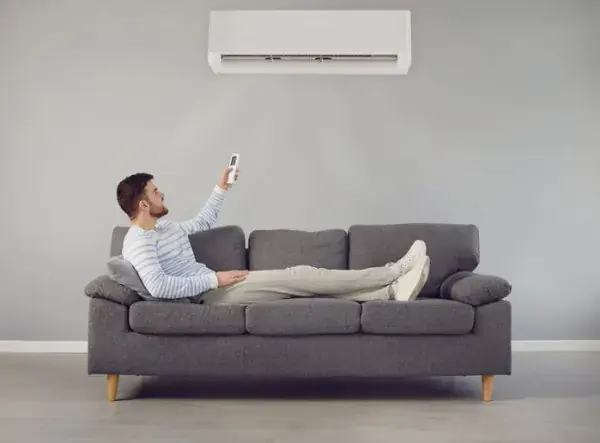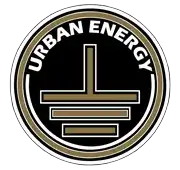Ducted vs Split system air conditioning
Are you in the market for a new air conditioning system? Perhaps you are looking for a new home installation or upgrading your existing AC, it's likely you've encountered the two primary types of air conditioning systems Ducted and Split System. When considering which system will best suit your cooling and heating requirements, understanding the differences between the two will help with your decision-making A few things to consider when choosing which air conditioning system will best suit either your home or business is the space needed for installation, your temperature control needs, the upfront cost, and ongoing maintenance requirements.
Let's look at both systems, how they function, installation requirements, ongoing maintenance, and the general pros and cons of both. Making a well-informed decision is crucial, considering that air conditioning is a significant investment that should bring long-lasting satisfaction for many years. Find the perfect balance between convenience and cost-effectiveness for your unique needs with our comprehensive comparison.

Overview of ducted air conditioning
Ducted air conditioning is a popular choice for larger homes, commercial buildings, or offices where individual room control and a discreet appearance are desired. Ducted air conditioning is a perfect option as it allows for precise control over the temperature in different rooms or zones, providing a more even and consistent climate throughout the entire space regardless of size.
Ducted air conditioning is made up of a centralised cooling and heating system that uses a network of ducts to distribute conditioned air throughout a building or a home. The central unit can be located outside or within the building and has a series of ducts that connect to it and various rooms or zones. The central unit then cools or heats air and then pushes it through the ducts to different areas, where the vents or ducts release the conditioned air.
Advantages of ducted air conditioning
- Whole-house Cooling/Heating: Ducted systems can efficiently cool or heat an entire home or building.
- Even Temperature Distribution: Ducts distribute conditioned air evenly, ensuring a consistent temperature throughout the space.
- Aesthetic Appeal: Ducted systems are discreet, with vents often integrated into ceilings or walls, providing a more aesthetically pleasing appearance compared to wall-mounted units.
- Individual Zone Control: Many ducted systems offer the ability to create zones, allowing users to control the temperature in different areas independently.
- Quiet Operation: Ducted systems can operate quietly since the main unit is typically located outside or in a less frequented space.
Disadvantages of ducted air conditioning
- Installation Cost: Ducted systems can be expensive to install, especially if ductwork needs to be retrofitted into an existing structure.
- Energy Consumption: Some ducted systems may consume more energy than other cooling/heating options, leading to higher utility bills.
- Maintenance Complexity: Maintenance and repairs can be more intricate, especially if issues arise within the ductwork.
- Inability to Target Specific Rooms: While zoning is a feature, it may not be as precise as individual units in each room, and there may still be some temperature variations.
- Not Suitable for Every Space: Ducted systems may not be practical for smaller homes or spaces where the installation of ductwork is challenging.
Overview of split system air conditioning
While split system air conditioners are versatile and popular, the choice between split and other systems depends on factors such as the size of the space, installation requirements, and specific cooling or heating needs. Split-system air conditioning systems are made up of two separate units. These units are connected by refrigerant lines, power cables, and a drainage pipe. The refrigerant circulates between the indoor and outdoor units, transferring heat and allowing the system to cool or heat the indoor space.
When considering a split system air conditioner, it's important to weigh these cons against the benefits and determine whether a split system aligns with the specific requirements and preferences of the space where it will be installed.
- Indoor Unit: This component is installed inside the room or space that needs to be cooled or heated. It typically includes the evaporator coil, air filter, and a fan. The indoor unit is responsible for absorbing heat from the indoor air during the cooling process or delivering heat during the heating process.
- Outdoor Unit: The outdoor unit is installed outside the building and contains the condenser coil, compressor, and fan. This component releases the heat absorbed from the indoor air into the outdoor environment during the cooling process and vice versa during the heating process.
Advantages of split system air conditioning
- Ease of Installation: Compared to ducted systems, split systems are often easier and less expensive to install, especially in existing buildings.
- Individual Room Control: Each indoor unit can be controlled independently, allowing for personalised temperature settings in different rooms or zones.
- Energy Efficiency: Split systems often have high energy efficiency ratings, particularly models with inverter technology.
- Flexibility: Split systems are suitable for a variety of applications, from single-room solutions to multi-zone setups.
- Aesthetics: The indoor unit is usually compact and can be mounted on walls or ceilings, providing a more discreet appearance than some other types of air conditioning units.
- Features: Available with built-in features such as motion sensors, Wi-Fi and air purifiers
Air Conditioning Installation
Air conditioning systems regardless of the size or type must be installed by a licensed HVAC technician to ensure safe and proper installation and trade compliance.
Disadvantages of split system air conditioning
- Limited Coverage: Split systems are designed for individual rooms or specific zones, which may limit their effectiveness in cooling or heating larger spaces or multiple rooms simultaneously.
- Installation Costs: While installation is often simpler than ducted systems, the initial installation costs can still be relatively high, especially if professional installation is required.
- Aesthetic Impact: While the indoor unit is more discreet than some other types of air conditioning units, it still occupies wall or ceiling space, and the outdoor unit may be visible from the outside, impacting the aesthetics of the building.
- Maintenance Challenges: Maintenance and cleaning of both the indoor and outdoor units can be more challenging compared to some other systems, and regular upkeep is necessary for optimal performance.
- Noise Levels: While split systems are generally quieter than some alternatives, the indoor unit's fan and operation can still produce noticeable noise, which might be a concern for some users.
- Dependency on Electricity: Split systems rely on electricity for operation, and power outages can disrupt their functionality. Additionally, they may not be as energy-efficient in regions with unstable or expensive electricity.
- Inconsistent Heating in Cold Climates: In extremely cold climates, the heating performance of some split systems may be less effective compared to alternative heating solutions, such as gas furnaces or heat pumps.
- Not Ideal for Whole-House Solutions: Split systems may not be the most efficient option for providing cooling or heating to an entire house, especially in homes with numerous rooms.

Urban Energy Air Conditioning Specialists
For all your air conditioning needs, don't hesitate to contact Urban Energy and speak to one of our dedicated electricians. Call 0485 814 490 or you can complete our online free quote request form
Reference https://www.compareairconditioning.com.au/faq/split-systems-vs-ducted-air-conditioning-systems/#google_vignette

